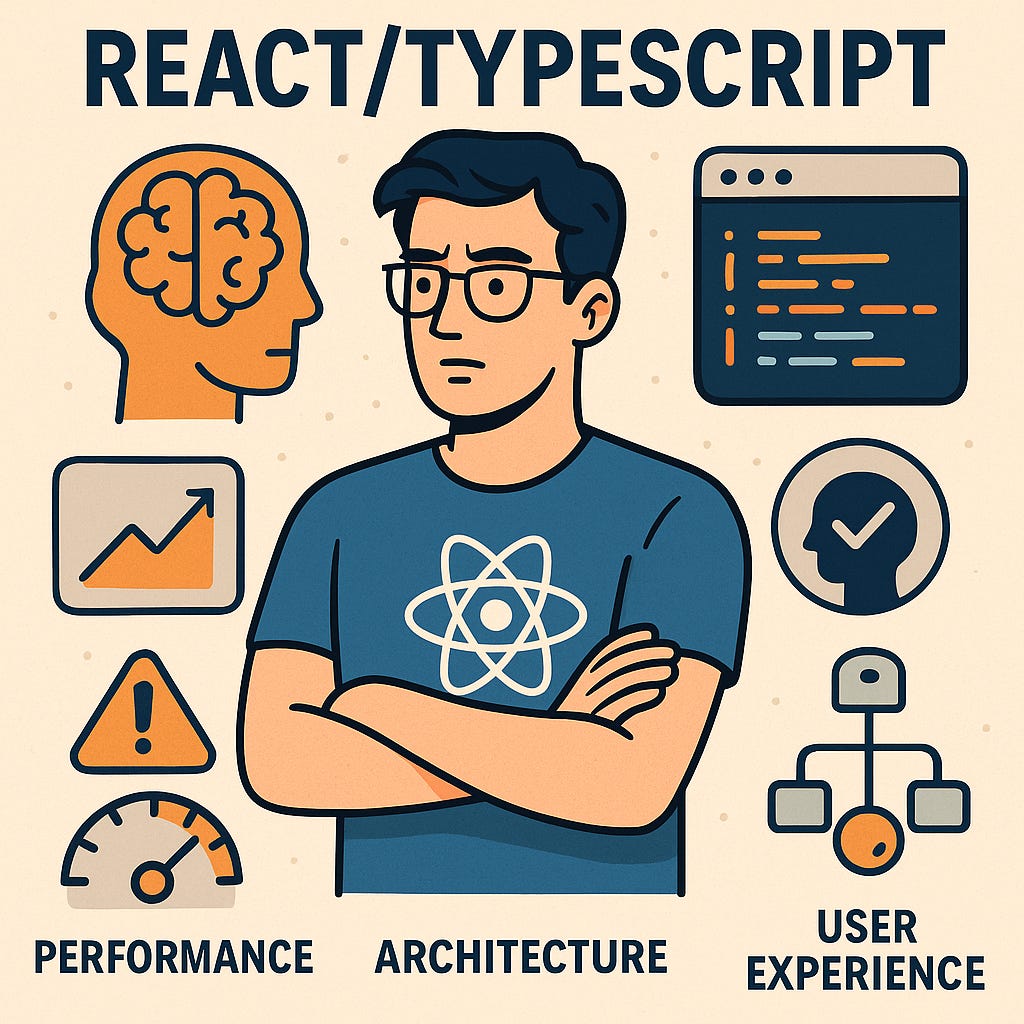Why Most React Apps Fail Before They Launch
Modern web apps die by a thousand re-renders. Here’s how TeamStation AI’s cognitive-science-driven vetting finds the engineers who don’t just use React—they master its mind.
🧩 The Problem — “Your App Isn’t Slow. It’s Thinking Too Much.”
Every CTO has felt it. The front-end looks fine in Figma, but the moment it hits production it drags like a tired server in July. The React profiler lights up like a Christmas tree, every click causing a cascade of unnecessary re-renders.
Developers insist it’s “just the framework.” It isn’t. It’s cognitive load—both human and computational. Most so-called “senior React devs” have never really studied the render cycle or the architecture of state. They know the syntax, not the psychology.
That’s where applications start to rot: too many contexts, too many props, too little discipline. Each new feature adds entropy. And if you’re a CTO watching metrics slip—LCP spiking, INP lagging—you already know this isn’t a UI problem. It’s an attention problem wearing JavaScript’s clothes.
⚙️ The Solution — Engineering Without Friction
At TeamStation AI, we built the Axiom Cortex™ precisely to filter for this kind of architectural intelligence. Our process doesn’t stop at “can you code?”; it asks “can you think in React?”
We hand candidates a broken, janky application and watch how they reason.
Do they reach for React.memo, or do they first measure re-render frequency?
Can they differentiate between client state and server cache, and design around both?
Do they use Zustand for UI state and TanStack Query for data caching, or keep forcing Redux to do both?
Our platform evaluates how a developer models complexity under pressure—the same way cognitive scientists measure working memory and decision latency. In essence, Axiom Cortex simulates a design review happening inside the candidate’s head.
Analogy: Think of React performance like human cognition. The untrained brain multitasks itself into exhaustion. The expert builds mental “memoization,” focusing only on deltas that matter.
This is how you identify engineers who naturally build performant, maintainable systems—people who treat components like neurons, not spaghetti.
🔬 The Proof — The Science of Velocity
You don’t have to take it on faith.
We published our methodology in the TeamStation AI Research Hub, available at
👉 https://cto.teamstation.dev/research/hub
Our studies apply neuro-psychometric analytics to engineering interviews: analyzing reaction times, decision branching, and syntactic variance to predict long-term code stability.
It’s not about resumes or years of “React experience.” It’s about measurable cognitive efficiency.
That’s why our vetted React/TypeScript engineers routinely outperform the market:
40 % lower defect density in production
2× faster onboarding into existing codebases
↑ 17 % Core Web Vitals improvements post-integration
And they don’t just fix code—they mentor it. The best ones create reusable, accessible component APIs, implement Storybook discipline, and leave behind a design system instead of chaos.
🧠 The Human Factor — What Great Feels Like
When you watch one of these engineers work, it’s oddly quiet.
No frantic stack-overflowing, no console logs carpeting the terminal.
Just deep focus and clean commits.
That’s what the Axiom Cortex was designed to surface: calm velocity.
Because when cognition and code align, performance isn’t something you optimize after launch—it’s baked into how your team thinks.
If you’re building a React or TypeScript product and want that kind of engineer, don’t gamble on LinkedIn filters.
Tap into the platform that measures how developers think, not just what they type.
📈 Continue the Playbook
Read the full CTO Playbook on Cognitive Vetting → https://cto.teamstation.dev
Explore our Peer-Reviewed Research → https://cto.teamstation.dev/research/hub
Main site →
https://teamstation.dev
© 2025 TeamStation AI – Nearshore IT Co-Pilot • Axiom Cortex • Neuro-Cognitive Talent Graph™


